Vintage Computers: The Mike III – A Home-built Z80 Computer
I started building a Z80 computer system in mid-1976. I came across an ad for a board set built by Martin Research of Northbrook, Illinois, and based my design on their 8008 and later 8080 schematics. By the time I built the CPU board, I decided I needed a Z80 instead, and fortunately by then I had sufficient cash to buy one.
Note that the 8080 was an 8-bit CPU with 16-bit address space and ran at about 2MHz or about 500K instructions per second). The Z80 came along in 1976 and ran at 2.5MHz and later up to 6MHz.
Here’s the computer in its first incarnation. Note that the name MIKE III was what Martin Research called their motherboard, so I adopted that name for my computer.
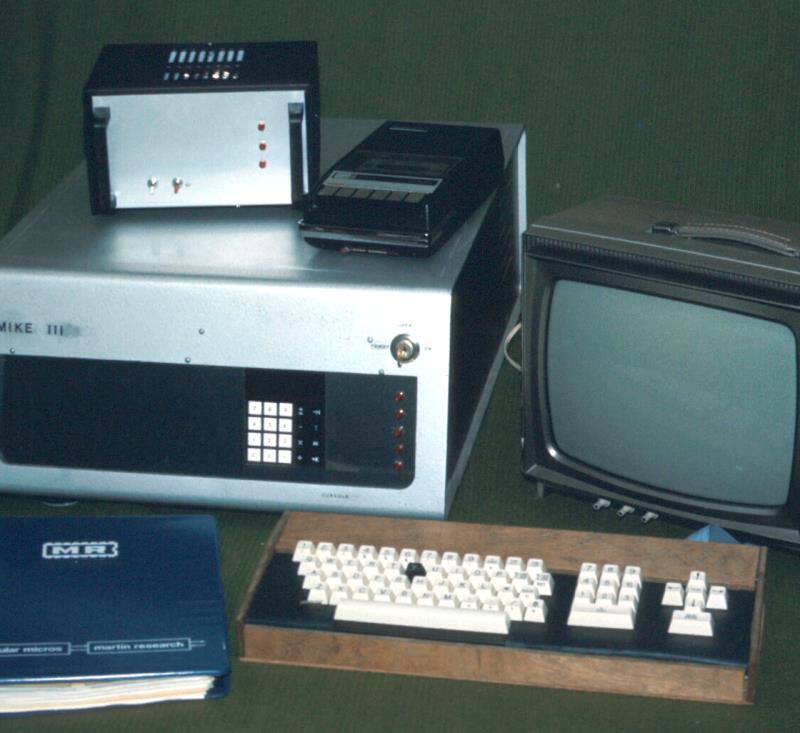
This was truly “franken-computer.” At the time I was a starving student so it was built with parts purchased from mail-order surplus electronics shops. The case came from some old minicomputer and I built the power supply from Radio Shack parts. The power supply used a 5V 5amp three terminal voltage regulator, which wasn’t quite big enough to handle the load. Even with the big heat sink, several went up in smoke and had to be replaced.
The first version used a cassette recorder as the mass storage device. I could save short programs to tape but depending on the tape quality, they might not always read back in correctly. Most of my programs were 1K to 2K bytes in length and were used to demonstrate functions of the computer or test various circuits. I also wrote a “tape operating system” that had to be bootstrapped from tape so it could load the rest of itself into memory and then read programs off of other cassette tapes.
The front panel of the Martin Research design was better than the ALTAIR/IMSAI design, which used a row of switches. Their design actually had firmware, unlike the ALTAIR, and you could enter programs in octal through the keypad. I later burned my own EPROM with my tape operating system loader, so I could bootstrap it without having to enter the loader program manually every time I powered up the computer.
The keyboard was also surplus from some old minicomputer. It was upper-case only and for some strange reason had one black key (“Y”). I later added lower-case by modifying the circuit, but the only switch I could find that I could bolt onto the keyboard as a shift key was a leaf switch from Radio Shack. But it worked!
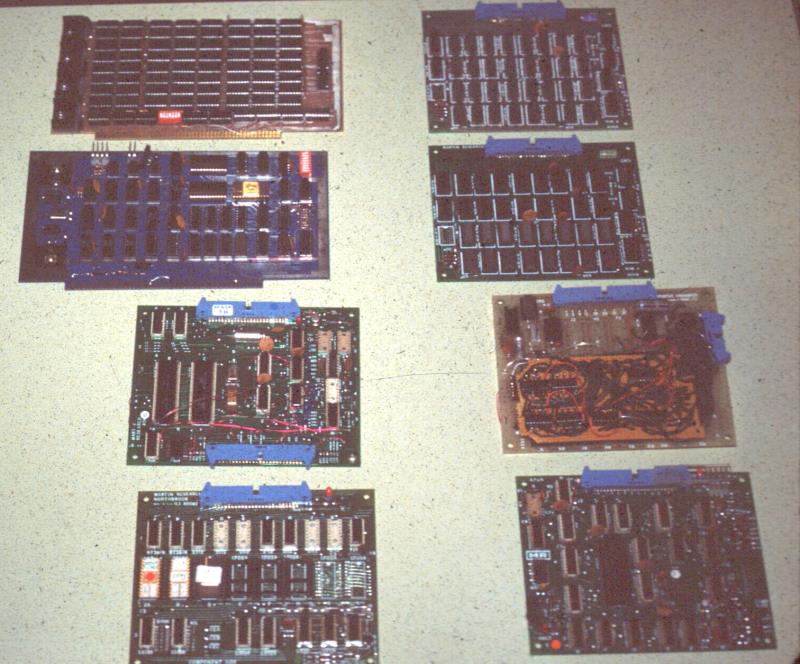
Above: the Mike III circuit boards. Martin Research used a ribbon cable bus instead of plugging the cards into a backplane. However by 1978 there were more S-100 cards available than anything from Martin Research so I designed an S-100 to Martin Research bus adapter and added another S-100 memory card and the video card.
Upper left: 16K (yes, kilobytes not MB or GB!) memory card.
Upper right: 8K Martin Research memory card.
Second row: video card and 4K memory card
Third row: dual RS-232 serial card and hand-wired analog I/O interface
Fourth row: EPROM (firmware) card and CPU card
Below: franken-computer. The chassis came from an old TV (one with actual vacuum tubes! At least it had tubes before I chopped it down to bare metal). In the foreground: three large capacitors. This was long before small switching power supplies were widely available. Rear: the S-100 video board. It was made by a company called SSM (originally Solid State Music). I think it was called the VB2, and was limited to 40 characters by 24 lines of text. The circuit board was blue, and they advertised it as the “blue board of happiness.” In the middle of the chassis is the Martin Research board stack, and on far right, the heat sink and 5V regulator.
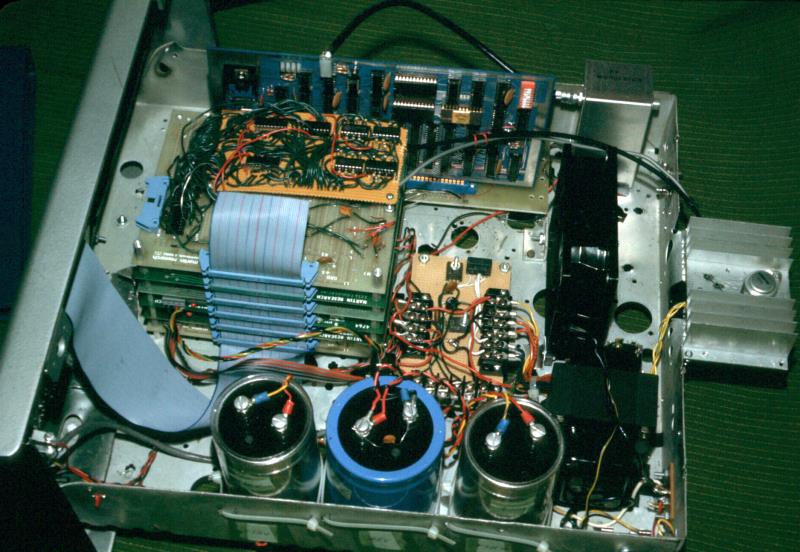
The SSM VD2 card could also display “character cell” graphics, which means that each character cell was broken into a 2 x 3 grid of blocks or really huge pixels. By specifying a binary code for each character you could build up crude graphics. I wrote a program to turn the computer into what was then called a “plotter.” A plotter was usually a rotating drum with a pen attached to an arm that could be used to draw images on paper. After much coding in assembler (machine language) I was able to draw simple shapes like boxes, circles and waveforms on the 40×24 line text display. This was a very difficult thing to do back then, also considering the fact that there was no built-in floating point library, so all you had to work with were the integers from 0 to 65535 (or -32768 to +32767 if you want negative numbers).
Also note that the output of the video board was composite NTSC video (just barely). I had to run it through an RF modulator to feed it into an old portable TV, but later modified the TV to bypass the tuner and feed the video directly into the preamp, which noticeably improved the quality of the display.
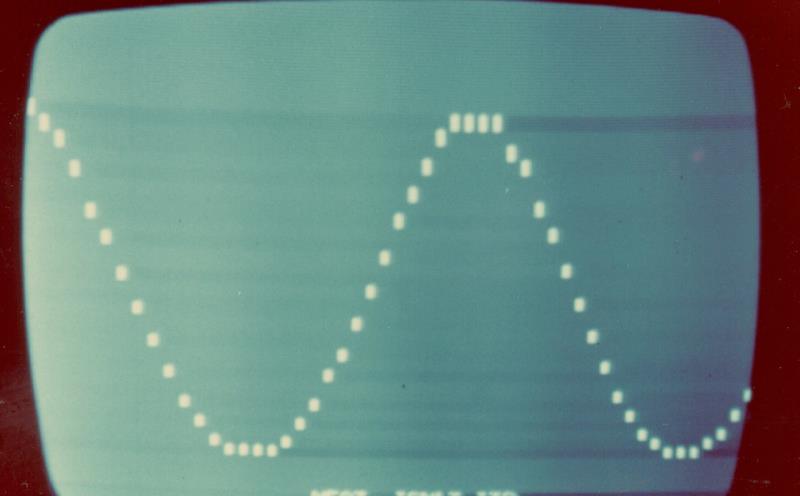
Below: MikeIII in its next life, with two floppy drives attached. This photo was taken in July, 1979 in my dorm room at UNL. The floppy disks each held a maximum of 60KB. The drive itself cost about $500 I think, and the controller card was another $200. It ran a very limited OS called FDOS, which was even more primitive than CP/M, but it had a BASIC interpreter!
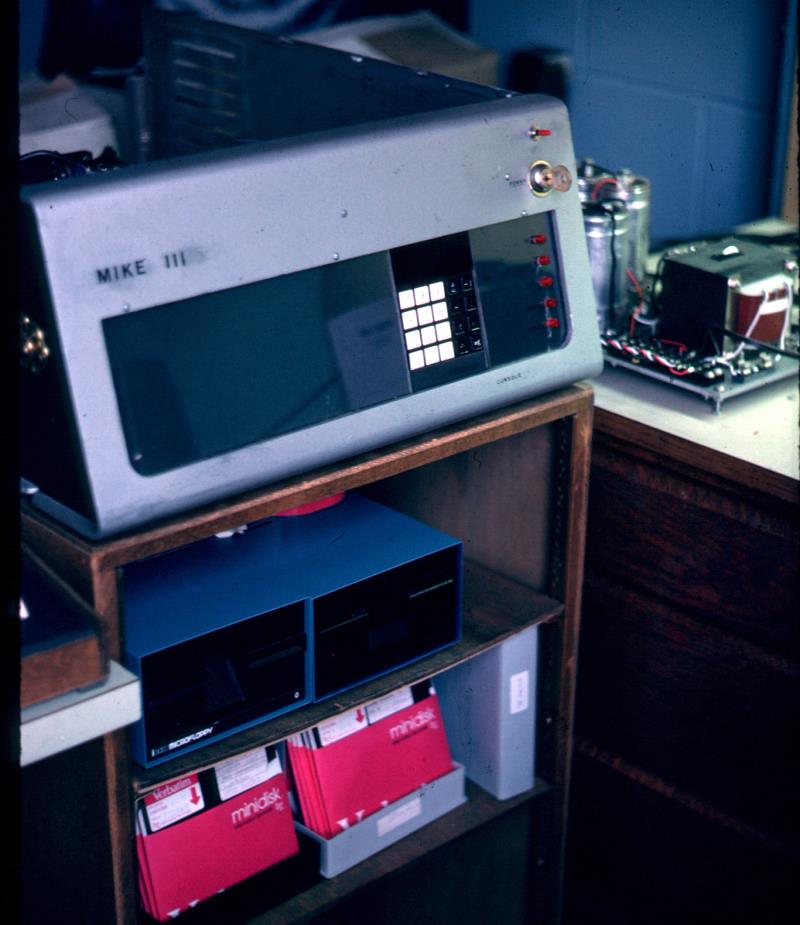
Below: the chassis of the MikeIII after it put on some weight. On the right is the expanded S-100 bus, which by 1979 hosted the video card, the floppy disk controller, a 16K memory card and I think another I/O card.
In 1979 I bought a used 300 baud acoustic modem and used it to connect to the University’s IBM 360 mainframe. I was the first person to use a home-built computer to connect to NUROS, UNL’s unique text editor and job submission system, and since I didn’t have a printer, I sent my program listings (and term papers) to the mainframe for printing. This marks the first use of a multimillion dollar IBM mainframe as a printer for a home computer.
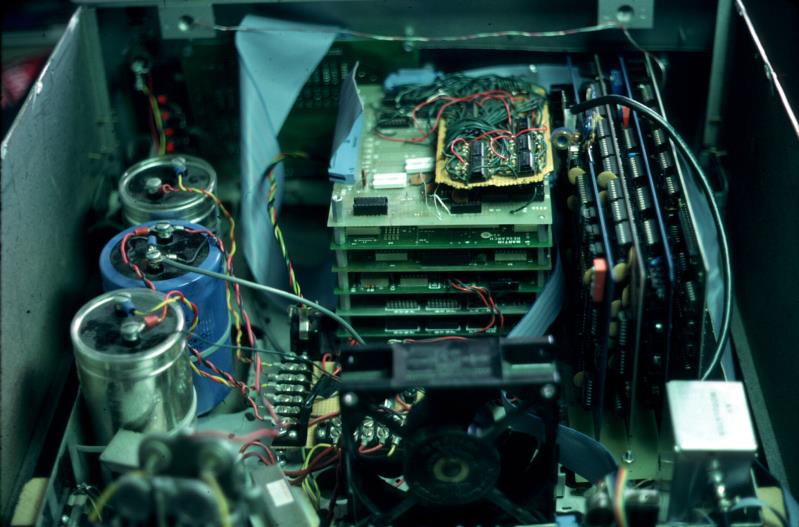
I used this system until 1980 when I started working for BYTE Magazine and bought a “real” S-100 system with dual 8″ floppy drives. I sold the MikeIII to my friend Gordon Heins, and I think he still has it stored away in his basement.
For more info on my second computer, see The Computalker CT-1 Speech Synthesizer
Copyright © Mark Dahmke, 2010. All Rights Reserved.
